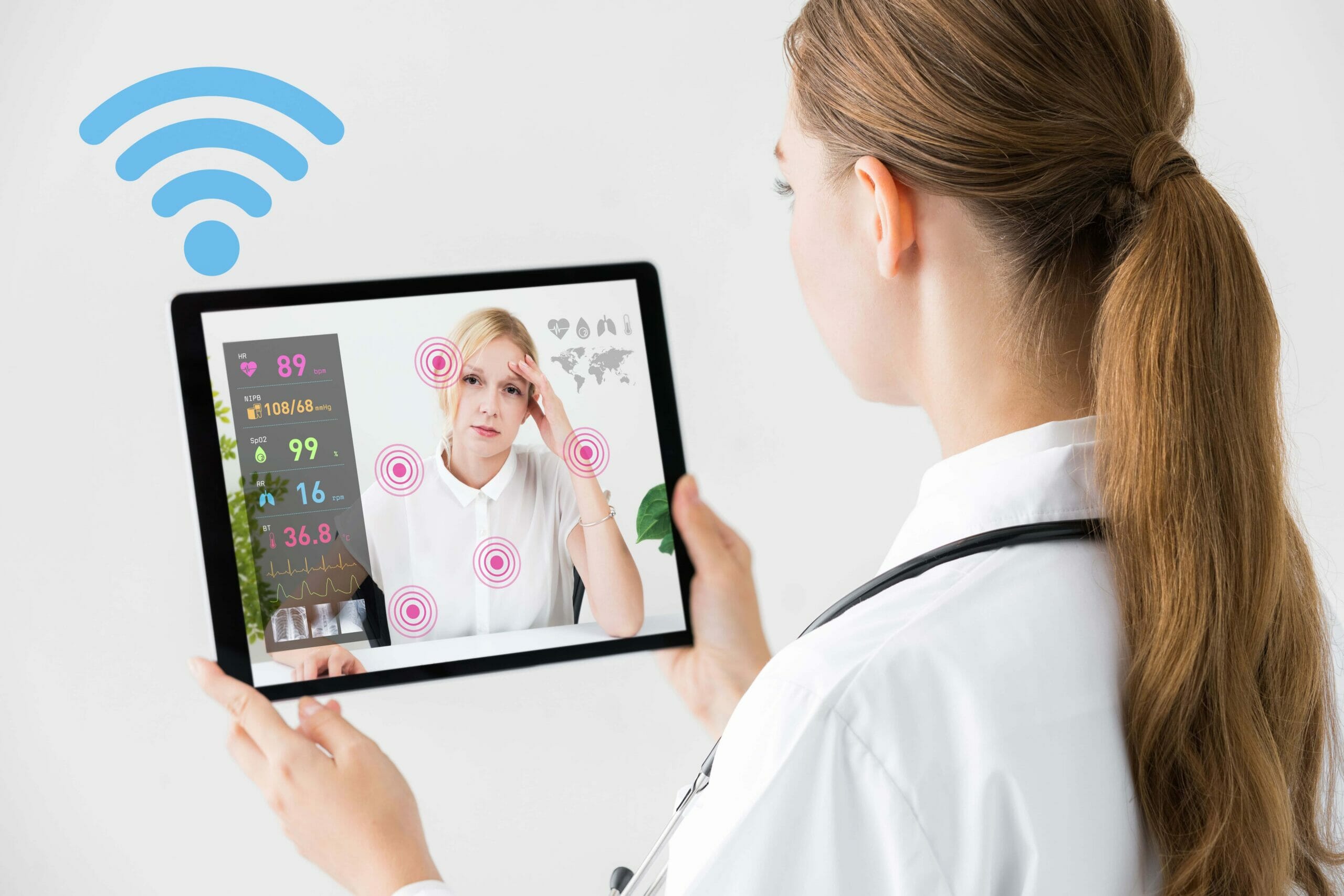Remote patient monitoring (RPM) is a healthcare delivery model that enables healthcare providers to monitor patients' health remotely without requiring them to be physically present in a hospital or clinic. It is a type of telemedicine that uses electronic communication tools to monitor patients' health remotely and transmit data in real-time. RPM allows individuals to keep track of patients' health conditions continuously and proactively, helping them to identify any changes in patients' health and intervene early, preventing severe health complications.
Remote Patient Monitoring Devices
RPM devices collect and transmit patients' health data remotely, typically via a wireless network. These devices can monitor vital signs such as blood pressure, heart rate, oxygen saturation, glucose levels, weight, and other parameters that are relevant to specific medical conditions. Patients can use these devices at home, work, or on the go, depending on their specific monitoring needs.
Remote monitoring technology comes in various forms, including:
-
Wearable Devices:
Which typically involve sensors that patients wear on their bodies to monitor their vital signs continuously. They include smartwatches, wristbands, chest straps, and other types of sensors.
-
Implantable Devices:
These small devices are surgically implanted under the patient's skin to monitor specific health parameters, such as blood pressure, glucose levels, or heart rhythm.
-
Mobile Health Applications:
Patients can download these smartphone applications to monitor their health data, which is received via the aforementioned monitoring devices.
-
Home-Based Monitoring Equipment:
Patients use home-based monitoring devices to measure their health data, such as blood pressure monitors, pulse oximeters, weight scales, or glucometers.
How Does Remote Patient Monitoring Work?
RPM devices use various types of sensors to collect patients' health data, including electrocardiograms, blood pressure sensors, pulse oximeters, glucometers, and more. These sensors are connected to a device that collects data and transmits it to a healthcare provider. The healthcare provider receives the data in real-time and can access it through a secure online portal, mobile application, or other electronic communication tools. Healthcare providers can monitor patients' health data, analyze trends, and identify any changes in patients' habits and treatments, enabling them to intervene early and prevent severe health complications.
The Benefits Of RPM
RPM can be used to monitor various health conditions, including:
- Chronic diseases such as diabetes, hypertension, and heart disease
- Acute illnesses such as infections
- Post-operative care
RPM is particularly useful for patients who live in remote or underserved areas, have limited mobility, or need frequent monitoring of their health condition.
The benefits of RPM are significant for both patients and healthcare providers. RPM enables patients to receive high-quality care without traveling to a hospital or clinic, saving them time and money. RPM also empowers patients to take an active role in their healthcare by providing real-time feedback on their health condition and encouraging them to make positive lifestyle changes accordingly. For healthcare providers, RPM enables them to monitor patients' health conditions proactively, preventing severe health complications and reducing hospital readmissions. RPM also allows healthcare providers to manage numerous patients simultaneously, improving efficiency and reducing workload.
RPM Challenges To Overcome
As with any medical and technological advancements, remote patient monitoring also has some limitations and challenges. One of the main challenges is the cost of devices and the associated infrastructure required to implement RPM programs. Additionally, RPM requires robust data security and privacy measures to protect patients' health information, which can be challenging to implement and maintain.
Why Consider Smart Meter?
The above challenges, however, are not obstacles that cannot be addressed. In fact, Smart Meter takes pride in providing RPM technology that serves as a solution to these “limitations” of remote patient monitoring. Smart Meter is the number one Remote Patient Monitoring (RPM) solution supplier.
All of our RPM devices use proprietary cellular software developed by world-class IT experts, are FDA-registered, and are connected to an exclusive AT&T 4/5G network. In addition, with the purchase of Smart Meter devices, RPM companies also have access to an exclusive device management platform that allows them to order, track, and deactivate any device at any time.
Our private RPM data network ensures that when a patient takes a reading, their data is instantly transmitted from the device directly onto our secure data collection platform. Our platform then aggregates patient data, and securely transmits the data back to their healthcare provider, facilitating prompt intervention.
The remote patient monitoring devices provided by Smart Meter include:
- The iBloodPressure®, which measures blood pressure for heart disease and stroke patients. There are multiple iBloodPressure devices to choose from to meet the individual needs of your patients
- The iGlucose®, which provides blood glucose readings for type 1 and type 2 diabetes management
- The iScale®, a patient-first weight measuring device, helpful in the management of heart disease, high blood pressure, type 2 diabetes, chronic kidney disease, and obesity.
- The iPulseOx®, which measures oxygen saturation in the bloodstream
Reach Out To Us
If you or someone you know could benefit from remote patient monitoring, reach out to our team at Smart Meter RPM to learn more.




